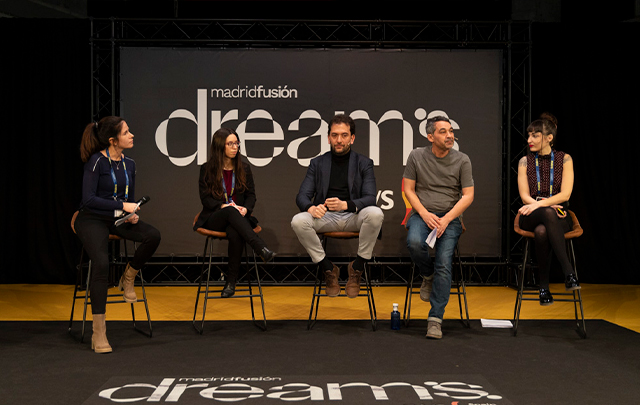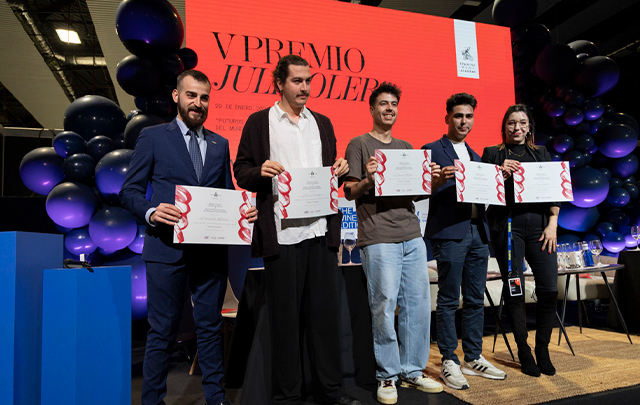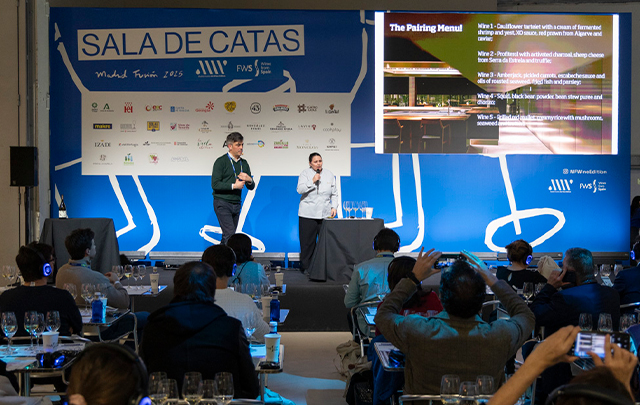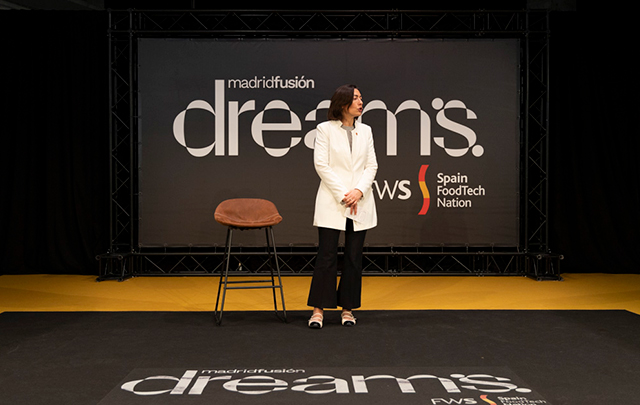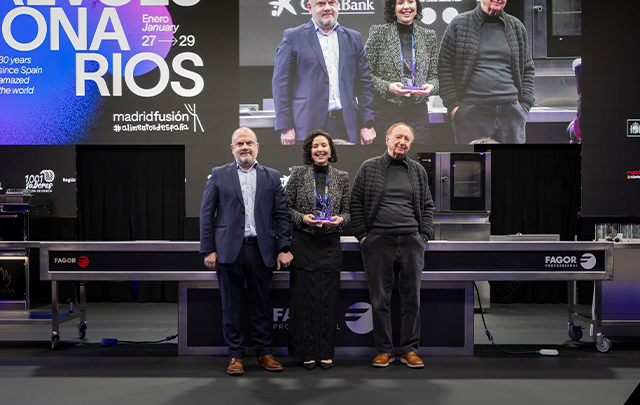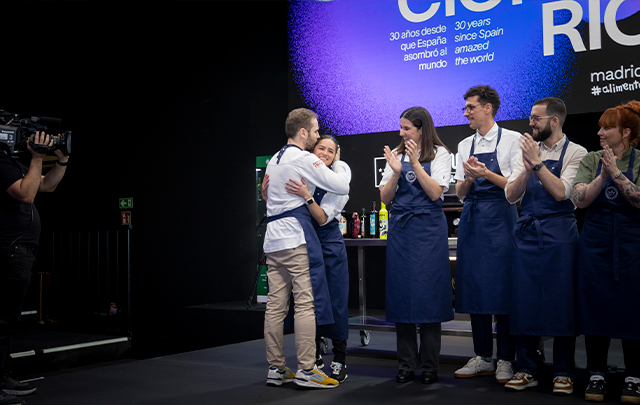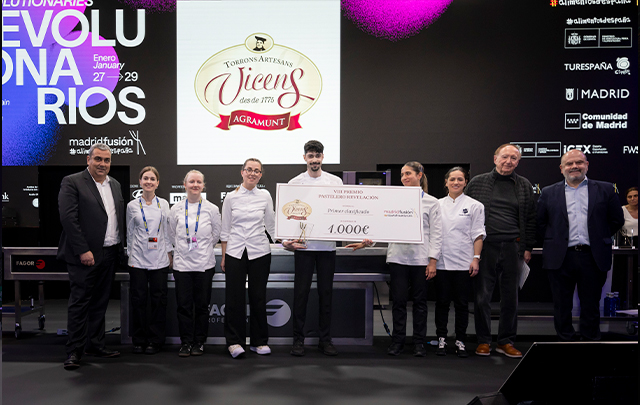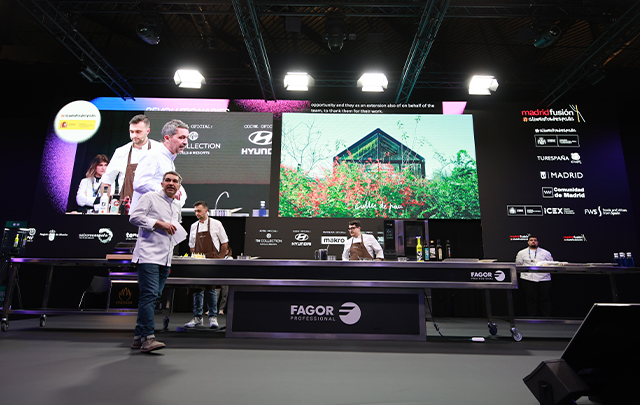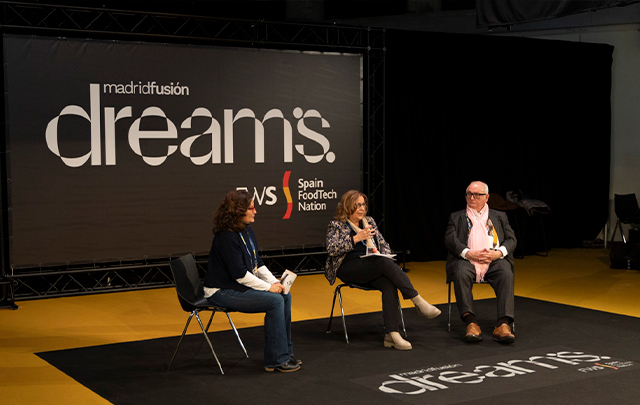News
The tasting menu, a gastronomic proposal with no expiry date

This type of cuisine, which runs parallel to creative cuisine, has the problem of time and the lack of flexibility that the customer has in choosing what to eat
Menus are not marked for death'. This was the conclusion reached by Juanlu Fernández, chef at Lú Cocina Alma; Albert Adrià, chef at Enigma; and Cristina Jolonch, food journalist, during the debate at the Madrid Fusión Alimentos de España: 'Is the tasting menu dead? Are we going back to à la carte?', presented by Manuel Villanueva, content director at Mediaset. During the discussion, in which it became clear that many customers are put off by tasting menus because they are relegated to the role of 'mere spectators', it was agreed that although a tasting menu is a statement of identity on the part of the chef, it has the problem of time for the customer, who, according to Adriá, is in charge. There are customers who see it as an experience that they can extend indefinitely, and others who eat in half an hour. So, although he considers this type of gastronomy to be a "necessary evil", he believes that the virtue lies in being able to give the customer what they want.
A form of gastronomy that seems to have been condemned to death in recent years, but which in Spain offers the best tasting menus in the world, thanks in part to the proposals made by Spanish chefs in each of their restaurants. A type of cuisine that runs parallel to the creative, allowing the restaurant to have a "solid" proposal that creates a different language and an alternative experience to the classic menu. They also believe that a menu of this kind, made up of numerous gastronomic proposals, allows them to offer dishes that would be impossible to include in a standard menu.
But while defending the need for this type of offering, where the chef marks the beginning and end of the customer's experience, and where the diner is not allowed the freedom that consumers often seek to choose what they want to eat, chefs who work with tasting menus believe that this cannot be the only way to understand signature cuisine. Especially at a time like this, when non-vegetarians have some sort of intolerance or allergy, they need to have more than one tasting menu on offer.
According to Fernández, when preparing the tasting menu, it is important to have dishes that can be moved around, so that the experience is fluid and you can move on to dishes that require more delicate preparation. It is a configuration that they are constantly innovating, always bearing in mind that the star or emblematic dishes are very difficult to eliminate, especially considering that many customers go to this type of restaurant to live the experience, to enjoy a gastronomic feast, so to speak, that increases the happiness of the diner with a unique and differentiated proposal.
This does not mean, the chefs continue, that this type of proposal cannot include hard bread or bread with oil. A chef is a spokesman for the culture of the land," said the Andalusian chef, before closing a presentation in which he called for an open mind and the search for a way to continue offering tasting menus in a country where, thanks to the variety of proposals, "people are eating better than ever".
Social networks in the kitchen
It is on social networks that many chefs and restaurants promote their gastronomic offer, a new form of communication that is massive - although not all chefs have jumped on the bandwagon - but not everything goes. You have to take care of your social media and it has to be real, like the kitchen," said Mario Sandoval, chef at Coque** (Madrid, Spain), at the table "Word of mouth, media, social media and gastronomy. Who fills the restaurants?", in which Carlos Maribona, gastronomic journalist; Verónica Zumalacárregui, journalist and influencer; Nandu Jubany, chef at Can Jubany (Calldetenes, Barcelona, Spain); and Miguel Carretero, chef at Santerra* (Madrid, Spain) participated.
During the meeting, the "feedback" that a presence on social networks gives to chefs was highlighted, which has allowed a "democratisation" of access to communication for small restaurants, giving them a new opportunity to make themselves known.
However, with the proliferation of networks, the profile of the 'influencer' has emerged, a figure who is not always familiar with the world of gastronomy, despite the fact that their publications reach thousands of followers. This is why, for Verónica, the role of the influencer cannot replace that of the food critic. We whet the appetite, because in a one-minute video I can't tell you all the details about a restaurant, but I can encourage you to go or read more about a restaurant.


